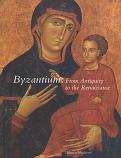Libros relacionados
 |
De Asfòdelos y Otras Flores del Mal Mexicanas Ana Laura Zavala Diaz Universidad Nacional Autonoma de Mexico |
 |
Modernizacion y Modernismo en el Arte Mexicano Ramirez, Fausto Universidad Nacional Autonoma de Mexico |
 |
Miró: The Experience Of Seeing_late Works, 1963-1981 Carmen Fernández Aparicio Yale University Press |


|
Título: Companion To Spanish American Modernismo | |
| Autor: Gonzalez Anibal | Precio: $550.00 | |
| Editorial: Tamesis | Año: 2010 | |
| Tema: Modernismo | Edición: 1ª | |
| Sinopsis | ISBN: 9781855662155 | |
| Modernismo, a literary movement of fundamental importance to Spanish America and Spain, occurred at the turn of the nineteenth century, roughly from the 1880s to the 1920s. It is widely regarded as the first Spanish-language literary movement that originated in the New World and that became influential in the "Mother Country," Spain. Characterized by the appropriation of French Symbolist aesthetics into Spanish-language literature, modernismo's other significant traits were its cultural cosmopolitanism, its philological concern with language, literary history, and literary technique, and its journalistic penchant for novelty and fashion. Despite the splendor of modernista poetry, modernismo is now understood as a broad movement whose impact was felt just as strongly in the prose genres: the short story, the novel, the essay, and the journalistic crónica (chronicle). Conceived as an introduction to modernismo as well as an account of the current state of the art of modernismo studies, this book examines the movement's contribution to the various Spanish American literary genres, its main authors (from Martà and Nájera to DarÃo and Rodó), its social and historical context, and its continuing relevance to the work of contemporary Spanish American authors such as Gabriel GarcÃa Márquez, Sergio RamÃrez, and Mario Vargas Llosa. | ||
Librería Bonilla SA de CV © Todos los derechos reservados. 2019
Última actualización: Jul 2019





